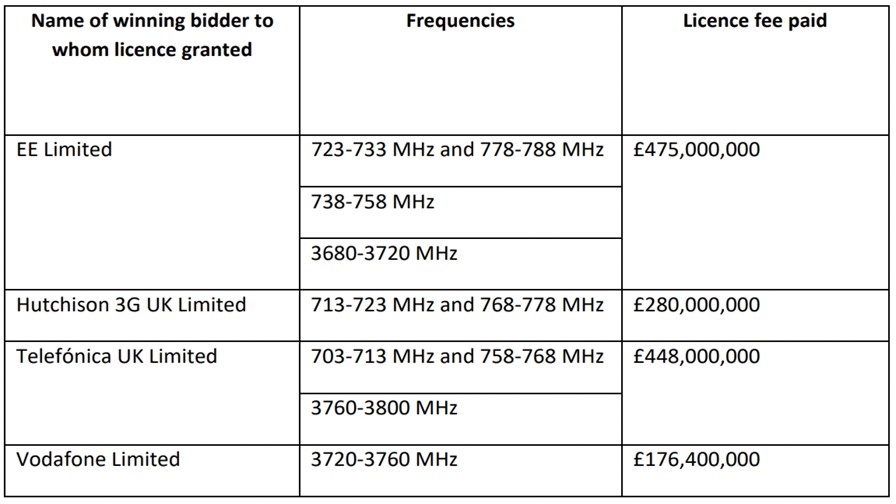
via Flickr © Gary Lerude (CC BY-ND 2.0)
- Ofcom’s auction process ends with an assignment phase - result announced today
- O2 and Vodafone have used the negotiating process to maximise the contiguous nature of their holdings
In the wake of Ofcom’s 700 MHz and 3.6 GHz spectrum auction, the final results of which were announced today, O2 and Vodafone have announced a spectrum trading deal which, they calculate, will make the most of their respective spectrum holdings, enhance their existing network mast sharing partnership and give them both a leg up in their battle with the market leader EE (owned by BT).
The trade will see O2 harness a contiguous block of 80 Mhz while Vodafone says it has used the auction’s assignment phase to ensure ‘good proximity’ for its total of 90 MHZ of spectrum.
O2 and Vodafone claim their arrangements will improve coverage for customers for both indoor and outdoor and across urban, suburban and rural areas.
According to Mark Evans, CEO of O2, “Securing contiguous blocks of spectrum is crucial to harnessing the true power of 5G.”
Vodafone UK’s CEO, Ahmed Essam, claims that Vodafone has invested to deliver brilliant coverage for both calls and data and the agreement with O2 means it has secured the best possible spectrum to continue giving its customers a fast and reliable 5G service and will help Britain at the forefront of innovation.
However, while Vodafone and O2 have made much of their sharing deal it’s no more than the design of the auction process allows, indeed encourages, via its assignment phase, the results of which were announced today.
The initial auction saw the available spectrum auctioned off to the UK’s four Mobile Network Operators. (see below) That was followed by the assignment phase where the winning entities are able to seek maximum ‘contiguous’ spectrum by placing “assignment bids” with Ofcom and taking part in negotiations with other networks to establish the exact “in-band” positions of their newly acquired spectrum.
By negotiating with their peers and spending a little extra for the privilege, each telco aims to optimise its ‘contiguous’ or adjacent spectrum giving it maximum flexibility and speed where required. The final assignments must be OK’d by Ofcom, which is also careful to point out that the auction was technology-neutral and the spectrum needn’t be used for 5G alone.
In effect the assignment phase not only increases the utility of the auctioned spectrum but may also be a way of evening up the auction outcomes by enabling the ‘runners up’ to gang up (in the nicest possible way) against the perceived winner or market leader - in this case EE.

Spectrum auction results: April 2021. Source Ofcom
Where the other MNOs stand
The three leading networks - EE, O2 and Vodafone - claim they’ve emerged triumphant from the auction process, of course, and are primed to exercise 5G leadership for UK inc. as a result.
BT/EE. BT’s auction effort saw it more than double its 5G spectrum holdings. It plans to roll out some of its newly won 40MHz of 3.6 GHz capacity immediately and says the spectrum allows for exceptionally high performance and capacity in areas with denser populations and can be accessed by all 5G handsets. It’s also laying much stress on its 700MHz spectrum holdings which it claims will support wider and deeper 5G coverage including indoor.
Hutchison’s Three, on the other hand, appears not to have attempted any negotiation in the assignment phase. It spent pretty heavily on spectrum in the 700 MHz bands so is probably happy with its current proximity.
Email Newsletters
Sign up to receive TelecomTV's top news and videos, plus exclusive subscriber-only content direct to your inbox.




